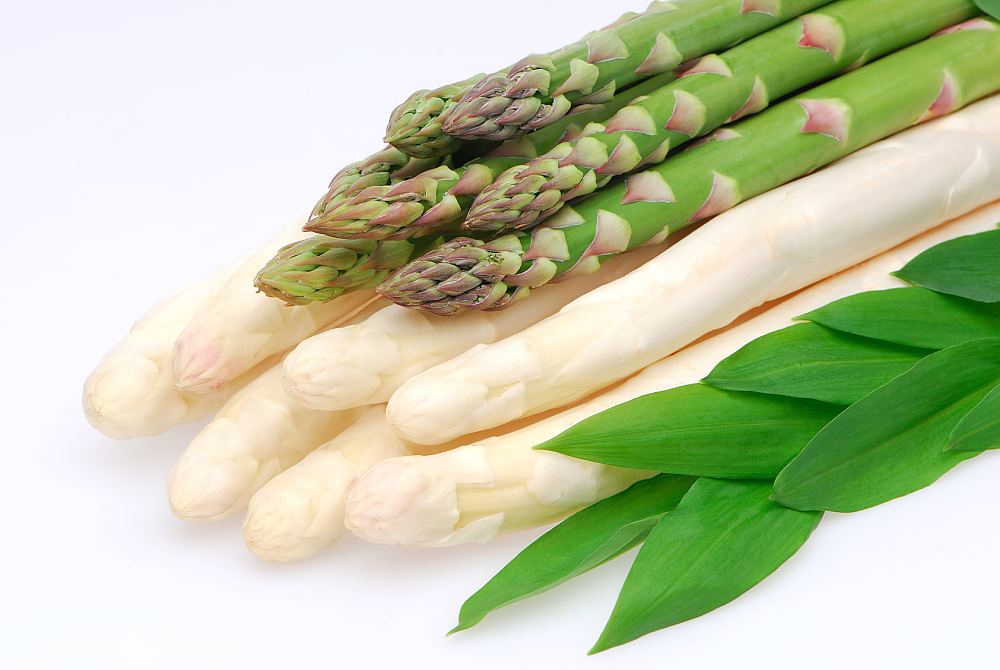Asparagus

Springtime is asparagus time
About 220 different species of the genus asparagus are known. The edible variety that we normally use is called garden asparagus or common asparagus (Asparagus officinalis).
The young shoots of the plants are eaten. They originally gave asparagus its name: “young shoot” is called “asp(h)áragos” in Greek.
Garden asparagus is widespread in the warm and temperate climate regions of Southern and Central Europe, North Africa and the Near East. Germany is Europe’s main asparagus producer.
Asparagus spears are harvested from about mid-April to mid-June before reaching their inflorescence in June and July. The white asparagus is harvested before it emerges above the ground, the green asparagus only afterwards, i.e. it is dug out when it is about 25 cm high and cut off at the bottom with a special picking knife. Harvesting is still mainly done by hand. Even in our regions, asparagus is still harvested manually.
Asparagus in the kitchen
Even though most people notice an offensive smell in their urine after eating asparagus, it is nevertheless a very popular, tasty and extremely healthy vegetable. Asparagus is low-calorie, has a diuretic effect and contains a lot of vitamin C, K, A, B1, B2, E, folic acid as well as magnesium, iron, potassium and copper – a vegetable for a diet.
In our regions, restaurant menus often offer cream of asparagus soup and classic white asparagus with Hollandaise sauce, ham and potatoes at this time of year. It is also highly recommended as a salad, for instance in combination with strawberries, or as asparagus risotto.
Asparagus is most frequently boiled in water. After adding salt and, if required, a little bit of sugar to mitigate the slightly bitter taste, it is cooked for 10-20 minus depending on texture desired. Green asparagus generally needs a few minutes less than white asparagus.